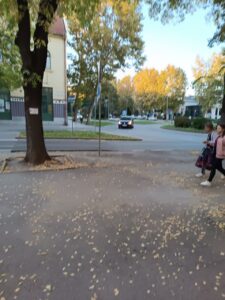Restoration of historical buildings in Subotica: opportunities and challenges
Subotica, a picturesque city in northern Serbia, is renowned for its rich architectural heritage, characterized by a blend of Art Nouveau, Baroque, and eclectic styles. The historical buildings that dot its landscape not only reflect the city’s cultural identity but also serve as a testament to its vibrant past. However, the restoration of these structures presents a unique set of opportunities and challenges. This article delves into the intricacies of restoring historical buildings in Subotica, exploring the potential benefits and the hurdles that stakeholders face in preserving this architectural legacy.
Opportunities
The restoration of historical buildings in Subotica offers significant opportunities for cultural tourism. As the city attracts visitors interested in its architectural beauty and historical significance, well-preserved buildings can serve as focal points for tourism development. By investing in restoration projects, local authorities and private stakeholders can enhance the city’s appeal, potentially increasing foot traffic and revenue for local businesses. Furthermore, restored buildings can host cultural events, exhibitions, and educational programs, enriching the community’s cultural landscape and fostering a sense of pride among residents.
Another opportunity lies in the potential for economic revitalization. Restoring historical buildings can stimulate local economies by creating jobs in construction, restoration, and tourism sectors. Skilled artisans and craftsmen are often required for such projects, leading to the preservation of traditional skills and techniques. Additionally, restored properties can increase property values in the surrounding areas, attracting new residents and businesses. This economic boost can contribute to a more vibrant community, encouraging further investment in infrastructure and services.
Moreover, the restoration of historical buildings can promote sustainability and environmental consciousness. By rehabilitating existing structures rather than constructing new ones, the city can reduce its carbon footprint and preserve valuable resources. Restoration projects often incorporate modern sustainable practices, such as energy-efficient systems and eco-friendly materials, aligning with global trends toward sustainability. This approach not only honors the past but also paves the way for a more sustainable future, making Subotica a model for other cities facing similar challenges.
Challenges
Despite the numerous opportunities, the restoration of historical buildings in Subotica is fraught with challenges. One of the primary obstacles is securing adequate funding for restoration projects. Many historical buildings require extensive repairs, which can be costly and time-consuming. Local governments often face budget constraints, and private investors may be hesitant to commit resources without a guaranteed return on investment. This financial uncertainty can lead to delays in restoration efforts or, in some cases, abandonment of projects altogether.
Another significant challenge is navigating the regulatory landscape surrounding heritage preservation. Restoration projects must adhere to strict guidelines and regulations set forth by national and local authorities to ensure that the historical integrity of the buildings is maintained. This can complicate the restoration process, as stakeholders must balance modern needs with preservation requirements. Additionally, the bureaucratic processes involved in obtaining necessary permits and approvals can be lengthy and cumbersome, further hindering progress.
Finally, there is the challenge of community engagement and awareness. While many residents appreciate the historical significance of Subotica’s architecture, there may be a lack of understanding regarding the importance of restoration efforts. Engaging the community in discussions about the value of preserving their architectural heritage is crucial for garnering support for restoration projects. Without public backing, initiatives may struggle to gain traction, and the potential benefits of restoration may go unrealized. Building a strong narrative around the importance of these buildings can help foster a sense of ownership and responsibility among residents.
The restoration of historical buildings in Subotica presents a complex interplay of opportunities and challenges. While the potential for cultural tourism, economic revitalization, and sustainability is significant, stakeholders must navigate financial constraints, regulatory hurdles, and community engagement issues. By addressing these challenges head-on and fostering collaboration among local authorities, investors, and residents, Subotica can preserve its architectural heritage for future generations while reaping the benefits of a revitalized urban landscape. The journey of restoration is not merely about bricks and mortar; it is about preserving the stories and identities that shape the city’s character.



